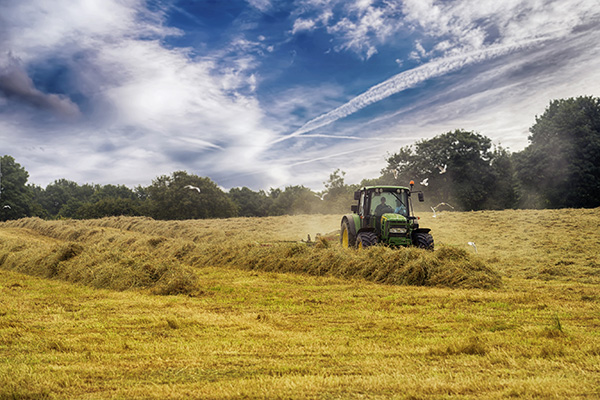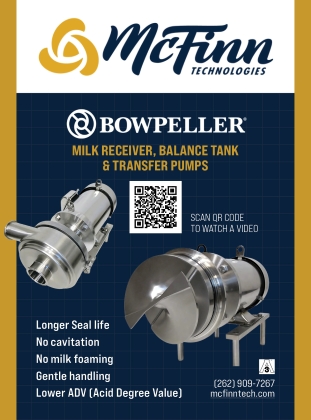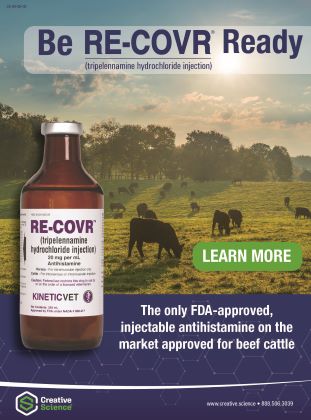Best Practices for Summer Haying

By Jessica Graham
For a lot of us, hay is a cornerstone in our dairy operation. As a primary feed source, high-quality hay plays a crucial role in supporting the productivity of our dairy cattle. Quality hay supports optimal milk production and overall farm profitability. For many dairy farms, producing hay not only saves money on feed costs, but it’s a strategic approach to maintaining control over feed quality and supply.
Bart Elder, Vermeer’s Eastern Regional Manager for forage spent some time talking with us about best practices for summer haying. Bart Elder covers territory east of the Mississippi and also Eastern Canada. He works with several dealers and territory managers on behalf of Vermeer.
It Starts with Mowing
Elder states, “We have promoted ‘hay in a day’, for quite a while; meaning haying within a 24-hour period.” Using this method will help farmers get their hay dry and maintain good quality and nutrition. The first step is getting the hay below 60% so the plants stop respiring and losing carbohydrates. Elder elaborates on this method, “Generally, when we begin mowing, hay is about 80% moisture and our goal is to get it to at 60%. One of the ways you can get hay to 60% quickly while maintaining quality, is by setting your mower to lay out wide swaths. Wide swaths allow hay to dry faster, reaching 60% moisture level where respiration ceases, and it helps maintain the quality. Edler says, “This could entail taking a large mower, leaving it in a wide swath, allowing just the air to dry it down. Our large trail mowers go up to 21 feet and can knock a lot of hay down in a hurry.”
After Mowing
For some producers, especially our folks who put up a lot of grass hay, you might benefit from a hay tedder. Elder says, “If you do ted it, instead of the top getting really dry and the bottom being really wet, you’ll get a much more uniform moisture level throughout the field. Our tedders are really one of the bestat truly inverting that crop, getting that wet to the top and the dry to the bottom. We’re truly inverting that crop, getting the wet to the top and the dry to the bottom. Really, at the end of the day, we want a nice, smooth field, with no clumps. The clumping is what will give you those moisture spikes in that part of the crop. If we can reduce that, the better off we are, for sure.”
”Tedders can save a lot of time waiting on hay to dry, especially if you have a lot of hay down. Another reason you might need a tedder is that tedders are particularly a crop-saver when hay gets rained on. Elder states, “Tedding does affect quality, and needs to be done at the right time. So, we’re definitely seeing a trend towards bigger tedders.”
When it comes to alfalfa hay, there is a lot of debate on using tedders on alfalfa hay. One of the drawbacks to a tedder is that it can be a little rough for alfalfa. The leaves aren’t everything when it comes to alfalfa hay, but some tedders can throw the alfalfa a little roughly causing leaf loss. However, some alfalfa producers, particularly in areas where dew is heavy in the mornings, insist that tedders attribute to making top-quality alfalfa hay and help save the leaves. The key is to be as gentle as you can with the alfalfa. According to Elder, “When it comes to tedding hay, there is definitely a right way to do it and a wrong way.”
At this point, you will hear a lot of debates about using a mower-conditioner to speed up drying time and keep quality. If you’re primarily mowing alfalfa, you might benefit by looking at a mower conditioner, but the benefits should be weighed for you, your time, your budget, your local climate, and your operation.
Raking Options
Elder goes on to point out some best practices when it comes to raking, “For quality hay, you want to keep your field consistent moisture, which is really hard to do. Hydraulic basket rakes can help with that. The hydraulic rakes are hydraulically driven and not ground driven.” He goes on to explain: “A ground-driven rake is going to get a lot of ash or dirt into your, into your hay or forage. Obviously, we don’t want that, right? So, the hydraulic basket rake will rake the material off the top of the stubble.” One might think the hydraulic rake baskets could leave a lot of material behind in the field. However, that is not the case.
Elder goes on to elaborate on the benefits of using a rake with hydraulic baskets, “When it comes to hydraulic rake baskets, some people like to think that they are harder on the hay, but really, it depends on how you pitch the baskets to set basket speeds.” Bart goes on to elaborate on hydraulic rake baskets, “Again, you want to keep that moisture level uniform throughout the field.”
“For alfalfa, we recommend roughly a three-inch cutting height., and haying 28 days later if you’re a dairy operation, and 32 days if you’re a beef operation. This timeframe will help to maximize protein quality,” says Elder.
Bailing
Once the hay is raked, baling becomes the final crucial step in maintaining quality. Proper baling not only preserves the nutrients in the hay but also ensures ease of storage and transport. Selecting the right baler is critical, as modern balers offer a range of features designed to maximize efficiency and reduce leaf loss, particularly for sensitive crops like alfalfa. It’s critical to adjust baling speed and pressure to match crop conditions, which helps create dense, uniform bales with consistent moisture levels. It’s all about creating a high-quality product that’s easy to handle and stores well without spoiling. Whether producing small square bales or large round ones, careful baling ensures the hay maintains its value as a primary feed source.
Conclusion
Hay production is a multifaceted process that requires attention to detail at every stage, from mowing and tedding to raking and baling. As Bart Elder highlights, adopting best practices can significantly impact the quality, efficiency, and profitability of a dairy operation. Wide swaths, proper tedding techniques, and the use of hydraulic rakes are just a few examples of how modern tools and methods can boost haying outcomes. By implementing these strategies, dairy farmers can ensure they produce high-quality forage that supports milk production and the long-term sustainability of their operation. As each farm is unique, choosing the right equipment and techniques tailored to specific needs is key to achieving success.



